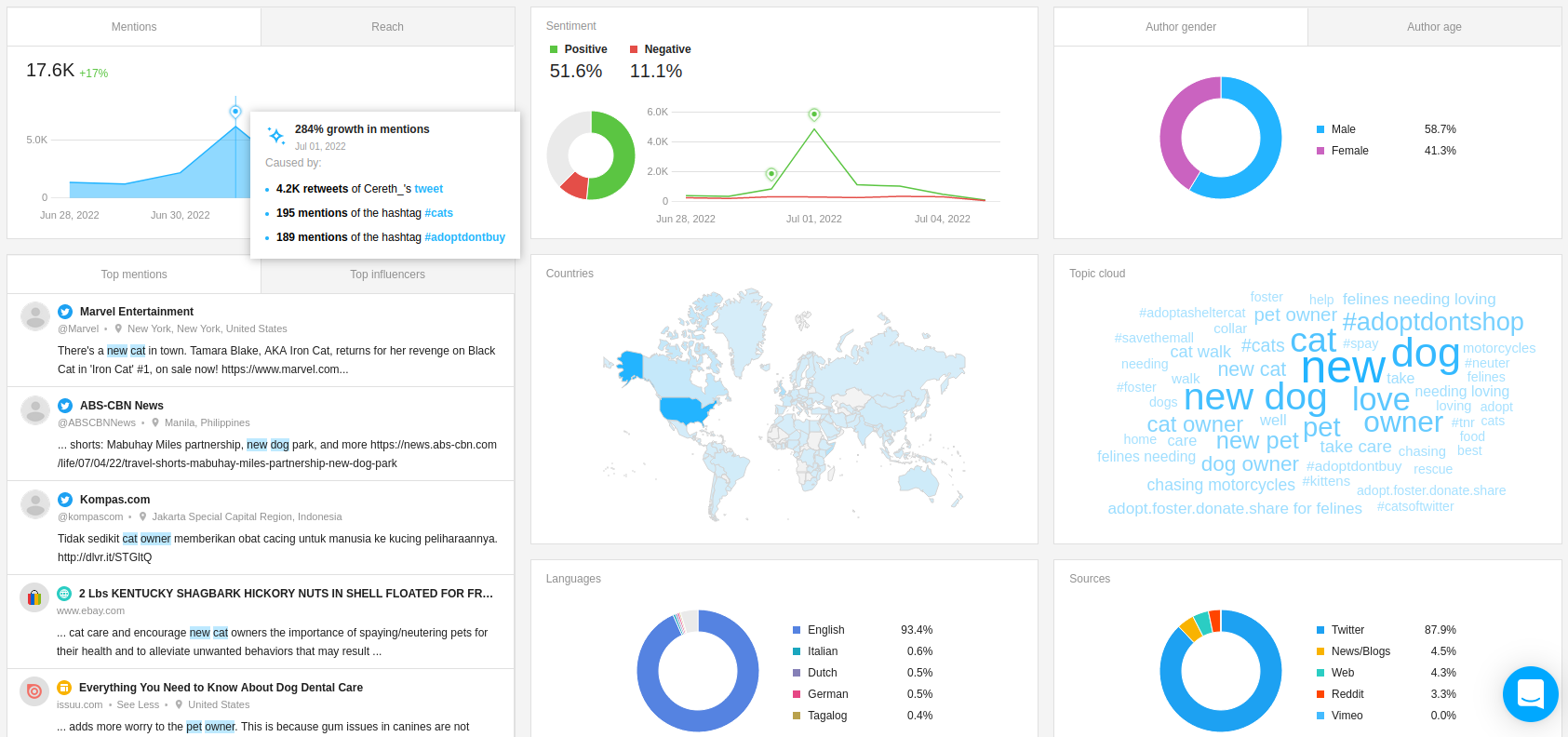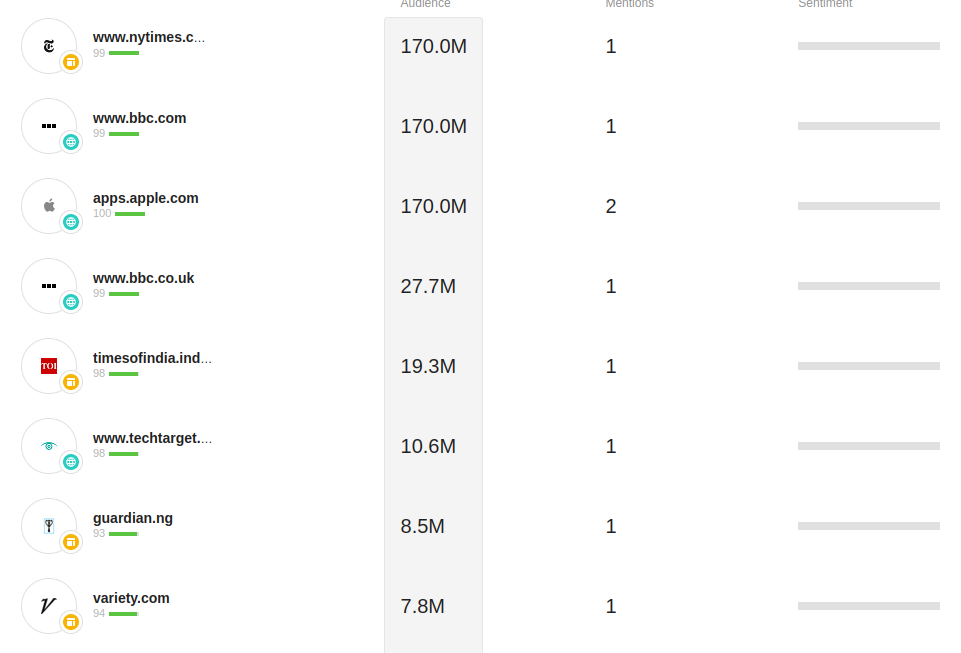Social listening research for nonprofits: how the Internet talks about fundraising

Article summary
In this article, we explain how social listening research can help nonprofits and explore how people talk about nonprofit fundraising online: what they say, how they feel, and who are those people.
10 minutes read
Here at Awario we have great appreciations for nonprofits and the noble causes they are trying to achieve. That's why we strive to provide many resources for them from education on nonprofit marketing to discounts for nonprofits on our multi-utilitarian social listening tool.
An important part of the life of any not-for-profit organization is fundraising. While much of the communication surrounding fundraising is happening between various foundations and huge institutions, individual donations can also play a major role in your organization's fundraising strategy.
We've decided to research the conversations around donations online. Who talks about them, how do people talk about them, and how various organizations try to encourage them.
For that, we employed Awario, our social listening tool to find and analyze any online posts mentioning fundraising, donations, nonprofits, and charities. You can set up the tool to notify you of the new mentions via email or push notifications.
However, before I reveal the results of our social listening research, let's briefly discuss what is social listening and how it can be useful for nonprofits.
By signing up I agree to the Terms of Use and Privacy Policy
How can social listening benefit nonprofits?
What you can get from social listening depends greatly on the specifics of your mission and your goals. With the sheer amount of analysis and insights Awario provides, it's important to know what to look for, to get the full benefits of social listening.

In basic terms, social listening gives you a way to connect to the right people and discover strategic insights supported by online data (which can also answer the question "who are the right people?"). Here are some reasons for using social listening:
-
Learn what inspires people to donate or volunteer.
-
Identify major trends relevant to the organization’s mission and then include the topics in their appeals.
-
Connect with supporters by responding to questions and comments or joining new conversations.
-
Determine what type of content works best.
-
Determine the best channels for communications.
-
Find social media influencers who can help promote your mission.
-
Show how well audiences understand the issues and gauge their level of awareness.
-
Safeguard the organization’s reputation and respond to crises that might affect it.
-
Monitor partners to learn if they are mentioning the organization and its cause.
-
Reveal how many people discuss its key issues, measure sentiment surrounding those conversations, and track trends in mentions and sentiment.
As I said, there are many more ways to implement social listening in your strategy.
For this particular article, we were curious to apply social listening analytics to conversations about fundraising. Of course, without concentrating on a specific niche and cause, the results of this research are pretty broad.
Nevertheless, we feel like spotting trends in the conversations around donations can be helpful for any organization trying to launch a fundraising campaign. So without further ado, let's get to the data!
How do people talk about donations online?
To organize our research in a reader-friendly way, I divided the results into two parts: who talks about fundraising and what they say.
Basically, in the first part, social listening gives us demographic and user behaviour insights on people talking about donations meaning who they are, where they live, and so on. While I didn't specify the languages of our research, the keywords I put in were in English, so it's expected that most of the results will be in English.
The second part will show us where on the Internet these conversations are happening and how people feel about them. Awario's Topic Cloud also helps to spot the trends inside the specific topics and we used it to analyze the context of these conversations.
Who are the people discussing nonprofit donations?
So what can we learn about the people who mention donations to nonprofits online?
First of all, not all of them are people. 40% of online posts about donations come from various organizations and companies.

These posts come both from nonprofit organizations asking for support and various brands who encourage their customers to support specific organizations or announce a donation from their profit.
As for the people talking about donations, there are more men than women in these conversations.

While the difference is not drastic, it's still useful information that can affect your fundraising campaign. And of course, the gender split will vary depending on the cause.
Most of the authors are aged between 25 and 34 years old, which makes sense since these are the people who usually have full ownership of their funds and at the same time spend the most time online.

The second biggest group is 35-44 years old, which is also expected.
Most of the mentions come from the US and the UK which was probably motivated by the use of English keywords and keyphrases. Surprisingly, more conversations about donations come from India that from English-speaking Canada. Perhaps, India has more urgent causes than need to be covered.

These are the helpful social listening insights we were able to find with Awario. Now let's move on to the content and the context of the conversations around donating.
By signing up I agree to the Terms of Use and Privacy Policy
What is the context of the conversations around donations?
First of all, let's see where these conversations are taking place on the Internet. We can see that most of the conversations are happening on Instagram and Twitter.

Granted, social listening tools have a limitation on Facebook monitoring due to its policies, they can't gather data from personal pages and groups. So if people are talking about donating on their personal Facebook profile, Awario won't be able to pick up these posts - that explains the lack of Facebook mentions.
The sentiment behind those conversations is surprisingly positive. I expected the negative sentiment to rise since usually, people ask for donations in a crisis situation that are far from positive, but it seems that it didn't affect the sentiment analysis.

Here are the most popular topics discussed during the conversations around donations:

As you see, a lot of popular words and phrases directly tie into our query, but the surprising word was "stream". By exploring the posts I found out that this is because of the many charity streams influencers organize. This can be a great activity to support your fundraising campaign - consider it!

Speaking about influencers, who are the most influential posters in these conversations?
Awario's Influencers report can help us find out!

We can see that various online media platforms reach the most people when talking about donations to charities and nonprofits.
Consider reaching out to online media in your fundraising strategy. Maybe the Times is beyond your capabilities, but even your local news sites can bring in more donations.
In conclusion
Here we showed how even the broadest research can give pointers on how to design your fundraising campaign.
By creating a social listening query that's designed for your organization and niche, the research will yield even more helpful results. Try it for free or buy Awario with a 50% discount and engage in social listening research!













